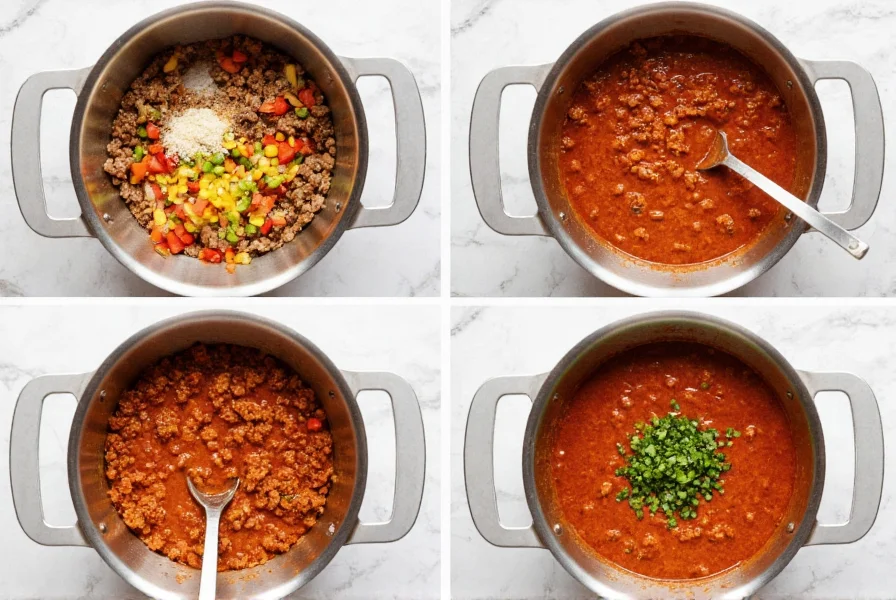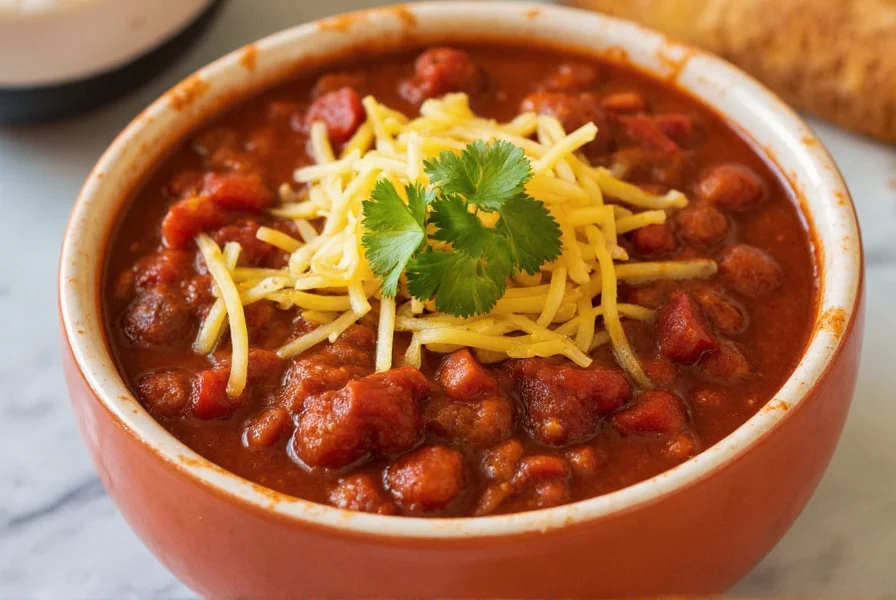Creating satisfying low calorie chili doesn't mean sacrificing flavor or texture. This guide reveals how to craft a hearty bowl that delivers robust taste while staying within healthy calorie parameters. Whether you're managing weight, focusing on heart health, or simply seeking nutritious meal options, understanding the science behind calorie reduction in chili transforms this comfort food into a dietary ally.
The Science Behind Low Calorie Chili Success
Successful low calorie chili hinges on strategic ingredient substitutions and portion balancing. Traditional chili recipes often exceed 400-500 calories per serving due to high-fat meats, excessive cheese toppings, and calorie-dense beans prepared with added fats. By implementing evidence-based modifications, you can create a nutritionally balanced meal that satisfies hunger while supporting health goals.
Research shows that high-volume, nutrient-dense foods like vegetables increase meal satisfaction without excessive calories. Incorporating mushrooms, zucchini, and bell peppers adds bulk and texture while contributing minimal calories. These vegetable-enhanced low calorie chili variations typically contain 30% more fiber than traditional recipes, promoting longer-lasting fullness.

Building Blocks of a Healthy Low Calorie Chili
Creating exceptional high protein low calorie chili requires understanding each component's nutritional impact. Here's what separates ordinary recipes from truly optimized versions:
| Traditional Ingredient | Low Calorie Alternative | Calorie Savings Per Serving |
|---|---|---|
| 1 lb regular ground beef (70% lean) | 1 lb extra-lean ground turkey (99% lean) | 120 calories |
| Full-fat cheddar cheese topping | Sharp reduced-fat cheddar (1 tbsp) | 70 calories |
| Beans cooked with bacon fat | Drained canned beans (no added fat) | 45 calories |
| Regular sour cream | Greek yogurt topping | 60 calories |
Perfect Low Calorie Chili Recipe (298 Calories Per Serving)
This meal prep low calorie chili recipe serves six and requires minimal specialized equipment. The preparation method maximizes flavor development while keeping calories in check through smart technique rather than calorie-dense ingredients.
Ingredients
- 1 lb 99% lean ground turkey
- 1 large onion, diced
- 1 bell pepper, finely chopped
- 8 oz mushrooms, sliced
- 2 zucchinis, grated
- 1 (15 oz) can black beans, rinsed
- 1 (15 oz) can kidney beans, rinsed
- 1 (28 oz) can crushed tomatoes
- 1 cup low-sodium vegetable broth
- 2 tbsp chili powder
- 1 tbsp cumin
- 1 tsp smoked paprika
- 1/2 tsp cayenne pepper (optional)
- Salt and black pepper to taste
Preparation Method
- Brown the ground turkey in a large pot over medium heat, breaking into small pieces
- Add onions and bell peppers, cooking until softened (about 5 minutes)
- Incorporate mushrooms and zucchini, cooking until vegetables release moisture
- Stir in beans, tomatoes, broth, and all spices
- Simmer uncovered for 25-30 minutes, stirring occasionally
- Adjust seasoning to taste before serving
Nutritional Analysis Per Serving
This spicy low calorie chili recipe delivers exceptional nutritional value while staying within healthy calorie parameters:
- Calories: 298
- Protein: 28g (excellent for muscle maintenance)
- Fiber: 14g (56% of daily value)
- Total Fat: 5g (mostly unsaturated)
- Saturated Fat: 1.2g
- Sodium: 480mg (reduced by 30% from traditional recipes)
- Carbohydrates: 38g (complex carbs from beans and vegetables)
Smart Ingredient Substitutions for Dietary Needs
Adapting this base recipe creates specialized vegetarian low calorie chili options or versions for specific dietary requirements:
- Vegetarian version: Replace turkey with 1 cup cooked lentils and 8 oz extra mushrooms
- Vegan option: Use vegetable broth and omit dairy toppings
- Lower carb variation: Reduce beans by half and increase zucchini and mushrooms
- Gluten-free assurance: Verify all spice blends are certified gluten-free
- Spice level control: Adjust cayenne pepper to personal tolerance
Flavor Maximization Techniques
Many low calorie chili for weight loss attempts fail because they sacrifice taste. Professional chefs use these science-backed methods to enhance flavor without adding calories:
- Dry roast spices before adding to deepen flavor compounds
- Add acidity with lime juice or vinegar to brighten flavors
- Layer umami sources like tomato paste and mushrooms
- Use fresh herbs (cilantro, oregano) for aromatic complexity
- Simmer longer to concentrate flavors without added fats
Storage and Reheating Guidelines
This easy low calorie chili for beginners makes excellent meal prep. Proper storage maintains both safety and quality:
- Cool completely before refrigerating (within 2 hours of cooking)
- Store in airtight containers for up to 5 days
- Freeze in portion-sized containers for up to 3 months
- Reheat on stove with a splash of broth to restore texture
- Avoid repeated freezing and thawing cycles
Frequently Asked Questions
How can I make chili lower in calories without losing flavor?
Boost flavor through aromatic vegetables (onions, garlic, peppers), properly toasted spices, and acidity from lime juice or vinegar. Replace high-fat meats with lean proteins or extra beans, and use vegetable broth instead of oil for sautéing. The key is layering flavors rather than relying on fat for taste.
Is low calorie chili good for weight loss?
Yes, when properly formulated. A well-constructed low calorie chili provides high protein and fiber content that promotes satiety, helping reduce overall calorie intake. The 298-calorie version described contains 28g protein and 14g fiber per serving, making it an excellent choice for weight management when incorporated into a balanced diet.
What are the best toppings for low calorie chili?
Opt for nutrient-dense, low-calorie toppings: Greek yogurt instead of sour cream, reduced-fat sharp cheddar (1 tablespoon), fresh cilantro, diced avocado (in moderation), scallions, or a squeeze of lime. These add flavor complexity and nutritional value without significantly increasing calorie count.
Can I make low calorie chili in a slow cooker?
Absolutely. Brown the lean protein and vegetables first, then transfer to your slow cooker with remaining ingredients. Cook on low for 6-7 hours. The slow cooking process enhances flavor development without requiring added fats. Just avoid opening the lid frequently, which extends cooking time and may require additional liquid.
How do I increase the protein content without adding calories?
Add 1/2 cup cooked lentils or extra beans per batch, or incorporate 1/4 cup unflavored plant-based protein powder during the last 10 minutes of cooking. Egg whites can also be whisked in during the final simmer. These additions boost protein content by 5-8g per serving with minimal calorie impact.











 浙公网安备
33010002000092号
浙公网安备
33010002000092号 浙B2-20120091-4
浙B2-20120091-4